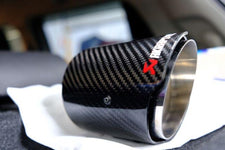Over the years a wide range of stainless steels have been developed for decorative and functional applications in the automotive industry. One of the very large present stainless applications is in exhaust systems. The most recent development is to add up to 4 per cent aluminum to a 13 per cent chromium alloy to impart exceptional oxidation scaling resistance in applications where exhaust temperatures reach 1200°C.
The origins of stainless steel date back to the early 1900s when an English metallurgist developed a type of steel for making knives that would not rust.
Technically, "Stainless Steel" is strictly a trade name applied to what are known as corrosion-resistant steels. It is a fabulous material that outperforms mild and alloy steels in so many different applications in racing that no other material can match it, and all racers should consider it as a vital element in their fabricating efforts. However, stainless steel does have some unique properties that the fabricator needs to know about before launching into a project.
An interesting characteristic of many types of stainless steel is that they are non-magnetic, a quality that makes them very important in the aerospace industry. Compared to mild steel, stainless steel has superior high temperature characteristics. It is an excellent material for headers and exhaust systems, or any application where high heat is encountered.
Stainless steel is similar to mild and alloy steels; it is an alloy of iron that contains at least 12% chromium. This high chromium content retards corrosion giving the steel its "stainless" quality. There are many alloys of stainless steel, which are broken down into two basic categories:
1.Chromium-nickel grades
2.Straight chromium grades
The chromium-nickel grades are the more common stainless steels used in race car fabrication compared to the straight chromium types, due to the nickel content which provides excellent weldability and corrosion resistance. Also, this nickel improves some mechanical properties such as fatigue strength, toughness and ductility. People sometimes refer to stainless steels based on their chromium and nickel content: for instance, 18-8 stainless has 18% chromium and 8% nickel in it.







